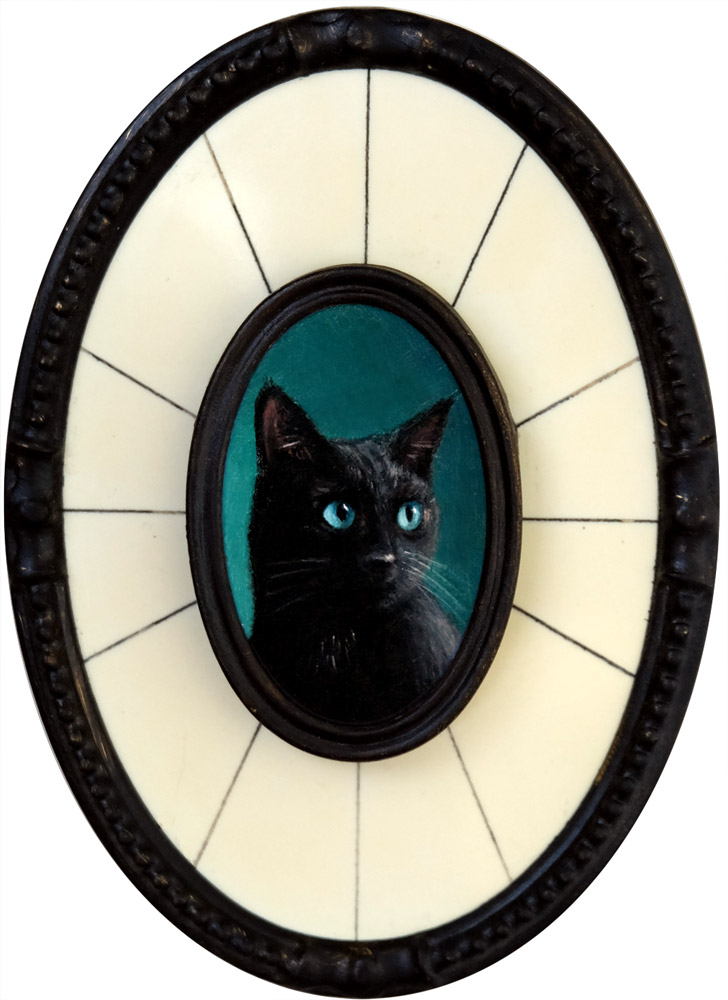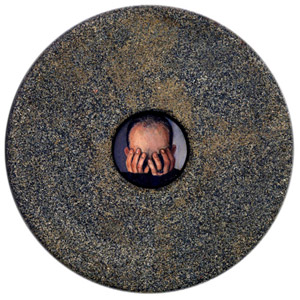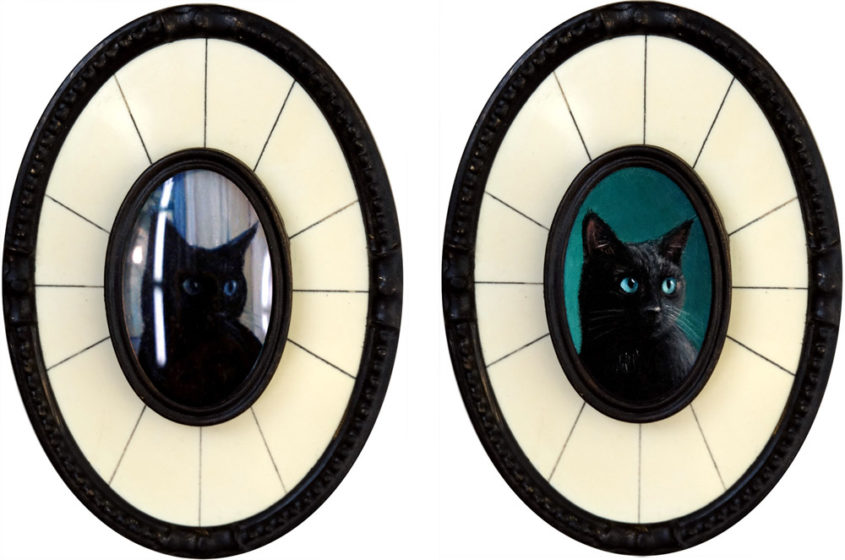
Portrait of a Black Cat, oil on aluminum, 1.5″ x 1″ (unframed)
The perfect frame for your picture? Or the perfect picture for your frame?
During my art school days I worked as a picture framer, which taught me a lot about how to present my own artwork. At that time, I actually framed very few of my paintings in traditional frames, but explored many nontraditional methods to hang and frame my artwork.

Miniature portrait painting by Rebecca Luncan
Miniature frames are always hard to come by, and “found objects” became my best friends. I used a wide variety of everyday objects as frames, like the large sanding wheel pictured here, and the frames began to inform the content and character of my paintings. I used a conduit box to hold a double-sided painting that rotated within its frame to reveal one face at a time, and that spawned a whole series of “turn paintings,” and other sculptural paintings, all inspired by the use of a found object as frames.
Now years later, I’m totally in love with traditional picture frames. Having learned how nontraditional frames can shape the painting itself (and be an essential part of the artwork), I can now appreciate the dialog between a traditional painting and its frame. Beautifully hand-finished wooden frames, or brushed or polished metal frames attract my eye and fascinate me nearly as much as the paintings within. I find that antique frames are the best of both worlds, combining the elegance of a traditional frame with the thrill of finding a unique object that shapes the painting it frames.
Sometimes making a match between a painting and its frame works right off the bat, and other times it takes trial and error. I happily framed all of my Rabbit Monthly Miniature paintings in little antique frames, handpicking each frame and cutting metal to fit it (I paint mostly on copper and aluminum) before ever dipping my brush in paint.
But when I became enamored with 1920’s celluloid and bone frames, often used to frame miniature portraits, I ordered about a dozen of them but had a hard time getting my first celluloid-framed painting to look right. The frame itself demands a lot of attention, and I found that although I was reasonably happy with the painting itself, it did not look right when paired with the frame. After months of thinking how I could make it work, I finally removed the painting from its frame to apply a few experimental coats of paint. I simplified the background, limited the pallet, and added highlights to the cat’s face (below) to make it a stronger focal point. I also got rid of the glass, which made it tougher to see the details in the black cat’s fur.
The lines radiating through the celluloid demand a strong focal point in the painting; the cat’s eye color echoes the background like the cat’s body echoes the frame. I’m much happier with the final painting—it even looks bigger to than the original—but I never would have arrived at this solution without having the frame to inform it. Click to see an in progress image in between the two stages.

Portrait of a Black Cat, First and final versions, oil on aluminum framed in an antique celluloid and brass frame, 1.5″ x 1″ (unframed).
This painting will be on view at Childhood’s End Gallery for their anniversary Small Works exhibition this October. If you’re in Olympia please come take a peek! They have a fantastic Arts Walk that happens only twice a year. Check back for more details.